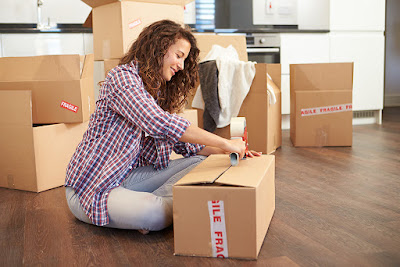Packing up when moving house takes longer than anyone imagines, so the first step is to decide if you're going to do all the packing yourself, if you’re going to employ someone to do it for you, or if you’re going to settle on a combination of both.
Whichever route you choose, start early, and if you’re doing your own packing, set aside a good amount of time each day to dedicate to it if you can.
Moving house kits containing boxes, bubble wrap, tape, stickers and marker pens are available online – see Amazon for a wide selection of contents and prices – or from your removal company if you’re using one. There are also specialist packing boxes available – with dividers for plates for instance, or hanging rods for clothes. Equally, you can save money on things like bubble wrap by wrapping precious ornaments in towels or clothing, or sandwiching bigger things, such as mirrors, between curtains or bedding.
Pack one room at a time - tackle the less used rooms first – not forgetting the garden shed – and then move towards the main living room, kitchen and bathroom. This way you’ll see the results quickly, and you can use the space to store the boxes from busier parts of the house.
Create labels for your boxes - so movers know where to put them in your new house. Stick the labels on the sides so that they’re easily seen when the boxes are piled on top of each other. Be specific – 'bedroom' isn’t enough unless you’re moving to a one-bedroom property, nor is 'child's bedroom' if you have a family of four. It’s best to number the bedrooms and then when you arrive at your new house, label the relevant doors with their number so there's no doubt where each box goes.
Write on the label what each box contains - This way, the mover knows what’s fragile, and can also judge how heavy the box is going to be.
Take care not to overfill each box - or make it too heavy. If you’re packing books, for instance, only half fill the box, and then take up the rest of the space with super-light items such as cushions.

Comments